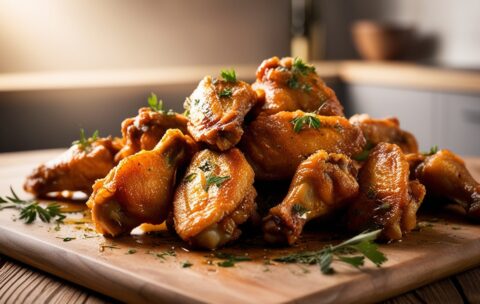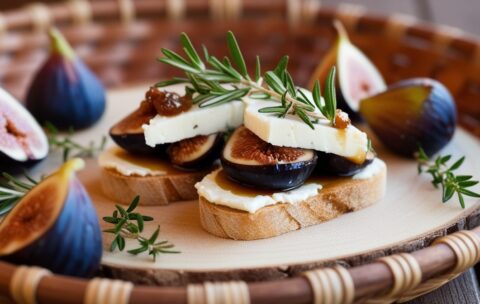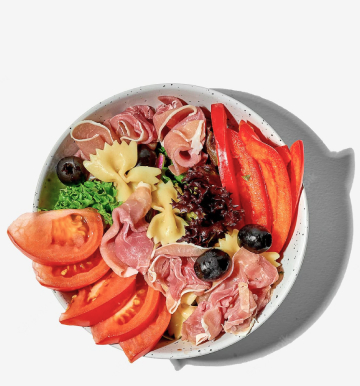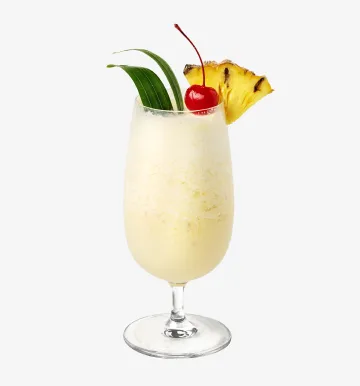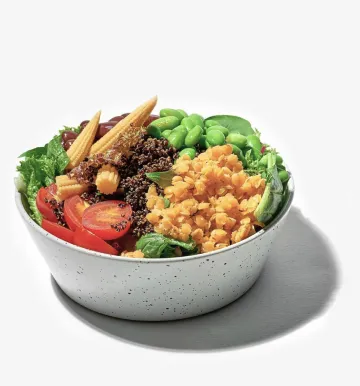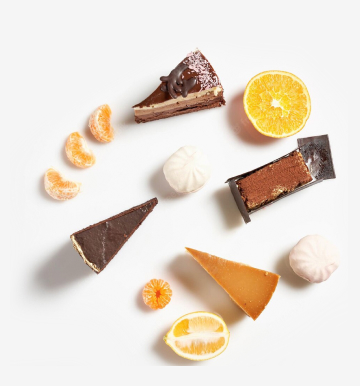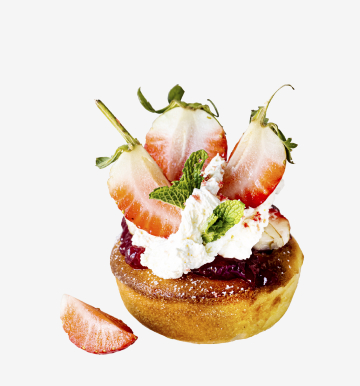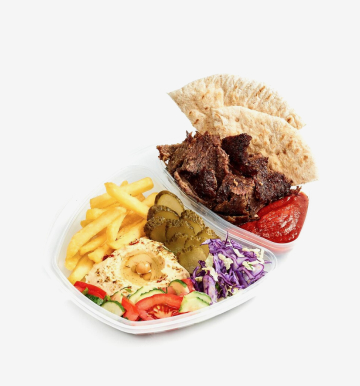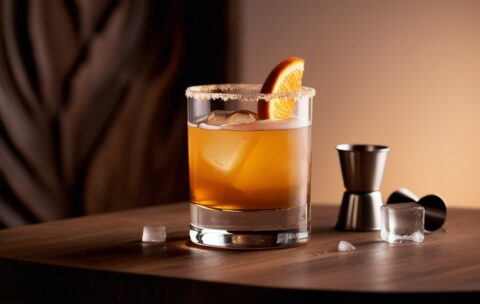Home Update 02
October 4, 2023 2025-06-05 13:04Home Update 02
Become a Home Chef
Learn to cook from scratch and master restaurant-quality meals in your own kitchen. Perfect for beginners and food lovers.

Our Top Courses
We've selected the best programs to get you started. Each course offers step-by-step lessons, hands-on recipes, and guaranteed results — even for beginners.
The Ultimate Crispy Chicken Wings Masterclass
3 Lessons
4 hours
Intermediate
What you'll learn
How to inspect and choose high-quality chicken wings for optimal taste and texture.
Proper trimming, joint separation, and brining methods to maximize moisture retention.
Seasoning strategies and marinade formulations that enhance depth of flavor.
Key differences between oven-baking, deep-frying, and air-frying to achieve different levels of crispiness.
Temperature control, timing, and airflow management to guarantee a golden, crunchy crust.
Moscow Mule
5 Lessons
1.7 hour
Intermediate
What you'll learn
Historical Background: Discover how the Moscow Mule emerged in post–World War II America and its role in boosting vodka’s popularity.
Ingredient Selection: Learn why a quality vodka and spicy, carbonated ginger beer make a difference, and how fresh lime juice elevates the drink.
Proportions & Balance: Master the classic ratio of vodka to ginger beer to lime, ensuring the right interplay of heat, acidity, and spirit.
Mixing Technique: Practice stirring versus brief shaking to preserve carbonation, and understand why crushed ice versus cubes can alter texture.
Presentation & Serving: Explore the tradition of using a copper mug—how it impacts temperature, aroma, and visual appeal.
Garnishing & Variations: Experiment with garnish choices (lime wheel, mint sprig, candied ginger) and creative twists (fruit infusions, flavored vodkas).
Tasting & Pairing: Develop your palate to identify the balance between ginger spice and lime acidity, and which foods complement the Mule’s zing.
Classic Cheeseburger
4 Lessons
1.3 hour
Intermediate
What you'll learn
How to choose the right ground beef blend (fat-to-lean ratio) for juicy, tender patties
Seasoning techniques that enhance natural beef flavor without overpowering
Patty-shaping tips to avoid overworking meat and ensure even cooking
Proper grilling or pan-searing methods for desired doneness (from medium-rare to well-done)
Cheese selection and melting techniques for that signature gooey layer
Assembly order: layering bun, patty, cheese, toppings, and condiments for optimal taste and texture
Creative twists—beyond the classic: variations in cheeses, buns, and sauce recipes
Side suggestions and plating ideas to complement your cheeseburger
Chocolate Mousse
5 Lessons
2.6 hours
Intermediate
What you'll learn
How to select the right chocolate type for mousse (dark, milk, or white)
Techniques for achieving light, airy texture without deflating
How to temper chocolate for maximum flavor and smoothness
Tips for folding ingredients like a pro
Creative plating and garnishing ideas (berries, mint, edible flowers)
Storage methods to keep mousse fresh and fluffy
Salmon Confit on Baby Spinach
4 Lessons
1.4 hour
Intermediate
What you'll learn
How to choose high-quality salmon for confit (fresh-fish selection, portion sizes)
Steps to prepare the poaching oil with aromatics (garlic, thyme, citrus)
Technique for gently poaching salmon at a precise low temperature (175–185 °F / 80–85 °C)
Preparing baby spinach with a light lemon-mustard vinaigrette (emulsion basics)
Methods for plating so the salmon and spinach complement each other visually and texturally
Wagyu Truffle Burger
4 Lessons
1.3 hour
Intermediate
What you'll learn
How to source authentic wagyu beef and distinguish grading (A5 vs. A3, etc.).
Techniques for gently forming wagyu patties that maintain optimal marbling and juiciness.
Methods for cleaning, slicing, and using fresh truffle, as well as alternatives like truffle oil or preserved truffle.
Seasoning balance: how much salt and pepper to enhance wagyu flavor without overpowering it.
Proper bun-to-patty ratio: selecting and toasting a buttery brioche bun to complement the richness.
Topping assembly: choosing and melting premium cheese (such as aged Gruyère or Taleggio) to pair with truffle.
Finishing touches: creating a truffle-infused aioli or mayonnaise, and adding crisp greens and caramelized onions to balance textures.
Beef Stroganoff
3 Lessons
2.3 hours
Intermediate
What you'll learn
Ingredient Selection & Preparation:
How to choose ideal beef cuts (such as sirloin, tenderloin, or ribeye) and properly trim and slice them into even, bite-sized strips.
Techniques for cleaning, slicing, and preparing mushrooms, onions, and garlic to maximize flavor release.
Sautéing Fundamentals:
Maintaining optimal pan temperature for searing beef without overcooking.
Building a flavor base by sautéing onions and mushrooms to the right level of caramelization.
Sauce Development & Balancing:
Creating a roux or pan-deglazing method to thicken the sauce naturally.
Incorporating sour cream (or crème fraîche) at the correct temperature to prevent curdling.
Seasoning strategies—mustard, paprika, Worcestershire sauce—for depth and complexity.
Timing & Texture Control:
Managing cook times to ensure beef remains tender while mushrooms and onions soften.
Knowing when to add sour cream off-heat versus on low heat for optimal creaminess.
Adjusting consistency—when to thin with stock or thicken by reduction.
Presentation & Serving Suggestions:
Plating options: over buttered egg noodles, fluffy rice, or silky mashed potatoes.
Garnishing ideas—fresh parsley, chives, or dill—for color contrast and aroma.
Tips for reheating or making ahead without sacrificing texture.
Goat Cheese and Fig Crostini
3 Lessons
1.2 hour
Intermediate
What you'll learn
How to properly slice and toast baguette rounds to achieve an even, crunchy base.
Techniques for preparing a simple fig compote, balancing sweetness and acidity.
Methods to blend goat cheese with complementary herbs or citrus zest for extra depth.
Tips for assembling crostini layers—goat cheese, fig compote, and finishing touches—for visual impact.
Flavor-pairing principles: matching creamy cheese with sweet fruit, crunchy bread, and a final drizzle.
Mai Tai
4 Lessons
1.2 hour
Intermediate
What you'll learn
Historical Origins & Evolution: Explore how the Mai Tai was invented by Victor J. “Trader Vic” Bergeron (or, by some accounts, Donn Beach) and how it shaped Tiki culture.
Ingredient Selection: Learn why orgeat syrup is indispensable, how to choose complementary rums (aged vs. dark), and the role of fresh lime juice.
Proportions & Balance: Master classic ratios (two rums : one lime : one curaçao : half orgeat) to achieve a harmonious interplay of sweetness, acidity, and almond depth.
Mixing Techniques: Practice shaking with crushed ice to create the signature frosty texture and correct dilution.
Garnishing & Presentation: Discover professional garnishing methods—mint sprig, lime shell, optional passion‐fruit froth—to enhance aroma and visual impact.
Variation & Customization: Experiment with fruit infusions (pineapple, passion fruit), flavored syrups, or alternate rum blends for personalized twists.
Tasting & Evaluation: Hone your palate to detect balance points, ensuring the nutty almond note complements but does not overpower.
Foie Gras–Topped Mini Slider
3 Lessons
1.3 hour
Intermediate
What you'll learn
Patty Composition: Balancing fat ratio and seasoning for ultra-tender mini burgers
Brioche Bun Technique: Butter-basting and gentle toasting for optimal texture
Foie Gras Preparation: Searing foie gras medallions to achieve a crisp exterior and silky interior
Gastrique Creation: Red wine-and-shallot reduction with a touch of vinegar for sweet-tart balance
Assembly & Presentation: Layering components for structural integrity and visual allure
Flavor Pairings: Complementary garnishes such as microgreens, fleur de sel, and truffle oil
Choose Your Category
Our courses are grouped by category to help you find what suits your taste. From quick dinners to gourmet desserts — start with what inspires you.



About Our Culinary Journey
We are passionate about bringing the joy of cooking to everyone. Our mission is to empower food lovers with the skills and confidence to create delicious meals at home. With expert chefs, innovative teaching methods, and a love for culinary arts, we’re here to inspire your kitchen adventures.
Our Commitment
Everyone can cook well. Our courses offer clear guidance to ensure success for all skill levels.
Community Focus
Join our foodie community. Share creations and grow in a supportive environment.
Why Choose Our Culinary Courses?
Our courses are designed to make cooking fun, accessible, and inspiring. Whether you're a beginner or a seasoned cook, our unique features will help you elevate your skills and unleash your culinary creativity.

Expert Instructors
Learn from world-class chefs with years of experience. Our instructors guide you step-by-step, sharing professional tips.

Flexible Learning
Study at your own pace, anytime, anywhere. Our online platform offers 24/7 access to lessons, so you can fit cooking into your busy schedule.

Hands-On Recipes
Practice with real recipes designed for all skill levels. From classic dishes to modern creations, you’ll master meals that impress every time.
What Our
Students Say
Hear from our happy students who have transformed their cooking skills with our courses. From beginners to seasoned cooks, our community loves sharing their success stories!
"This course completely changed how I cook! The instructors are so knowledgeable, and the lessons are easy to follow. I’m now confident making dishes I never thought I could."
Emma Johnson
"I love the flexibility of these courses. I can learn at my own pace and still feel supported. The recipes are amazing, and I’ve impressed my family with new dishes!"
Michael Chen
"The vegan cooking course was a game-changer for me. I learned so many creative ways to make plant-based meals that taste incredible. Highly recommend!"
Sophie Martinez
"The hands-on approach made learning so fun! I went from burning toast to baking artisan bread in weeks. Thank you for such an inspiring experience!"
James Carter
Discover Our Newest Culinary Courses
Get inspired by our latest additions! These exciting courses bring fresh ideas and techniques to your kitchen, perfect for food lovers eager to try something new. Browse our carousel to find your next culinary adventure.
Loaded Nachos
5 Lessons
2.6 hours
Intermediate
What you'll learn
Chip Selection & Prep: How to choose sturdy yet crispy tortilla chips to prevent sogginess under heavy toppings.
Protein Options: Techniques for seasoning and cooking ground beef, shredded chicken, or black beans to use as a hearty nacho base.
Cheese Melting Methods: Tips for pairing cheeses (cheddar, Monterey Jack, Pepper Jack) and getting an even melt under the broiler or in the oven.
Layering Strategies: The optimal sequence for chips, beans, cheeses, proteins, and vegetables so each bite has balanced texture—no more soggy bottoms or cold patches.
Homemade Toppings: Quick recipes for pico de gallo, guacamole, and sour cream drizzle, plus how to pickle jalapeños or shred lettuce for freshness.
Garnishing & Presentation: Final touches—cilantro, green onions, lime wedges, and diced tomatoes—to turn a simple tray into an Instagram-worthy platter.
Serving & Reheating: Best practices for keeping loaded nachos warm, how to reheat leftovers without losing crispiness, and portion guidance for parties of various sizes.
Old Fashioned
7 Lessons
1.9 hour
Intermediate
What you'll learn
How to properly muddle a sugar cube (or measure simple syrup) with bitters to create the foundation of an Old Fashioned.
Differences between using bourbon versus rye whiskey: flavor profiles, proof considerations, and regional traditions.
Techniques for selecting and expressing citrus peel to maximize aromatic oils without adding bitterness.
Best practices for choosing ice (large cubes or spheres) to control dilution and maintain temperature.
Stirring methods that achieve a silky texture and proper dilution—timing, tool grip, and motion.
Variations on the classic recipe, such as adding a barspoon of water, swapping citrus types, or using flavored bitters.
French Gateau & Entremet Principles
2 Lessons
1.3 hour
Intermediate
What you'll learn
Fundamental Structures: How to build entremets layer by layer—choosing and baking the right sponge (génoise, Joconde, biscuit cuillère), creating thin croustillant layers, and assembling mousse and bavarois tiers for height and stability.
Texture & Temperature Management: Techniques to ensure each component sets properly (e.g., mousse firmness, gelatin bloom, glaze viscosity) and how to keep layers distinct without bleeding.
Flavor Profiling & Balance: Pairing fruit purées, chocolate, nuts, and creams to achieve harmonious taste profiles. Understanding acidity, sweetness, and how to cut richness with complementary elements (fruit inserts, crunchy praline).
Advanced Finishing Techniques: Preparing and applying a smooth mirror glaze, torching velour sprays, using transfer sheets, and piping delicate decorations. Learning how to achieve a polished, professional look every time.
Assembly & Troubleshooting: Best practices for unmolding, repositioning, and storing entremets. Identifying and correcting common issues—sogginess, collapsed layers, uneven glazes.
Presentation & Plating: Strategies for cutting perfectly even slices, garnishing with textures (tuile, cocoa nibs, spun sugar), and arranging plated portions so they look as good as they taste.
Niçoise Salad
3 Lessons
3.5 hours
Intermediate
What you'll learn
How to cook baby potatoes to a tender yet firm “bite”
Blanching haricot verts (thin green beans) for vibrant color and snap
Properly searing fresh tuna (or preparing high-quality canned tuna)
Crafting a classic Dijon-vinaigrette with shallots and garlic
Composing and plating a balanced, restaurant-style Niçoise
Layer Cake Construction & Filling Strategies
3 Lessons
58 minutes
Intermediate
What you'll learn
Baking for Uniform Layers: How to prep pans (lining, spray), adjust batter distribution, and use baking strips or temperature hacks for flat, even cake tops.
Leveling & Stacking: Knife vs. cake leveler methods; applying a thin “crumb coat” of frosting; inserting dowels or straws for multi-tier support; stacking layers without slippage.
Filling Varieties & Textures: Selecting between custards, curds, fruit compotes, ganaches, buttercreams, and mousse fillings—considering sweetness, moisture control, and pairings (e.g., raspberry curd with chocolate cake).
Preventing Leaks & Weeping: Techniques for sealing cake layers (buttercream dam, chocolate collar), ensuring fillings stay contained; chilling strategies to set fillings before final coating.
Flavor Harmony & Balance: Matching cake flavor (vanilla, chocolate, spice) with filling profiles (tart, sweet, creamy) to avoid one element overpowering another; adjusting sweetness levels.
Finishing & Presentation Prep: Applying a smooth final coat of frosting or ganache; creating optional decorative borders or piped accents; slicing tips for clean, even servings.
Lamb Rogan Jos
3 Lessons
2.2 hours
Intermediate
What you'll learn
Outcome Description
Spice Selection & Preparation Identify and roast whole spices (cinnamon, cardamom, cloves) to form the foundation of the masala.
Yogurt Marinade Techniques Use yogurt and acid (lime or lemon) to tenderize lamb while preserving a creamy texture.
Building the Masala Layer ground spices (Kashmiri chili powder, coriander, cumin) for a balanced, vibrant curry base.
Browning & Layering Flavors Sear lamb to lock in juices, then deglaze with aromatics (onion, ginger, garlic) for depth.
Slow Simmering & Consistency Regulate heat and timing to allow lamb to become fork-tender without curdling the yogurt.
Finishing Touches Garnish with fresh cilantro, julienned ginger, and a drizzle of ghee for aroma and shine.
Paella Valenciana
2 Lessons
3.3 hours
Intermediate
What you'll learn
History and Regional Context
Origins of Paella Valenciana and its connections to Valencian agricultural traditions.
Distinctions between classic Valencian paella, seafood paella (Paella de Mariscos), and other regional variants.
Selecting and Preparing Ingredients
Rice varieties (Bomba vs. Calasparra) and their impact on texture.
Choosing quality proteins (chicken and/or rabbit), native beans (judía verde, garrafó), olive oil, and saffron threads.
Preparing vegetables: green beans (bajoqueta), garrafó beans, fresh tomatoes, and garlic.
Cooking Techniques and Timing
Building a sofrito base: sautéing meat, vegetables, and spices to develop depth of flavor.
Proper rice-to-liquid ratio and how to incorporate stock infused with saffron.
Achieving the prized socarrat (crispy rice crust) without burning.
Adjusting heat levels for even cooking and optimal moisture absorption.
Presentation and Serving
Traditional ways to serve Paella Valenciana—family style straight from the paellera.
Garnishing options (lemon wedges, fresh parsley) to enhance aroma and appearance.
Tips for reheating and storing leftovers without compromising texture.
Quinoa & Kale Salad
4 Lessons
2.9 hours
Intermediate
What you'll learn
How to cook quinoa perfectly every time
Proper technique for “massaging” kale to remove bitterness
Knife skills for uniformly chopping vegetables
How to whisk together a balanced lemon–tahini dressing
Tips for seasoning and customizing the salad to taste
Strategies for storing and reheating without sogginess
Spinach and Artichoke Dip Bites
3 Lessons
2 hours
Intermediate
What you'll learn
How to prepare and drain fresh spinach without excess moisture.
Techniques for chopping and seasoning canned or fresh artichoke hearts.
Methods to combine cheeses (cream cheese, mozzarella, Parmesan) for optimal creaminess.
How to fill and bake mini pastry shells (phyllo cups or mini tart shells) to prevent sogginess.
Timing and temperature control to achieve a golden crust and melted interior.
Whiskey Sour
4 Lessons
1.2 hour
Intermediate
What you'll learn
History & Origins: Discover the origins of the Whiskey Sour, including its 19th-century naval roots and how it evolved into a mainstream favorite.
Ingredient Selection: Learn how to choose the right whiskey (bourbon, rye, or blended), select fresh lemons, and prepare simple syrup.
Techniques & Ratios: Master the proper juice-to-whiskey ratio (typically 2:1), the role of egg white (optional), and the importance of “dry shaking” versus “wet shaking.”
Shaking & Pouring: Develop your shaking technique to achieve a balanced, chilled cocktail with the signature frothy top.
Garnishing & Presentation: Practice professional garnishing methods—lemon wheel, maraschino cherry, and bitters drops—to elevate appearance and aroma.
Variation & Customization: Explore variations such as using different citrus (e.g., lime), flavored syrups, or spiced bitters to personalize the drink.
Tasting & Evaluation: Hone your palate to identify balance, acidity, sweetness, and mouthfeel, ensuring each Whiskey Sour is perfectly harmonious.

